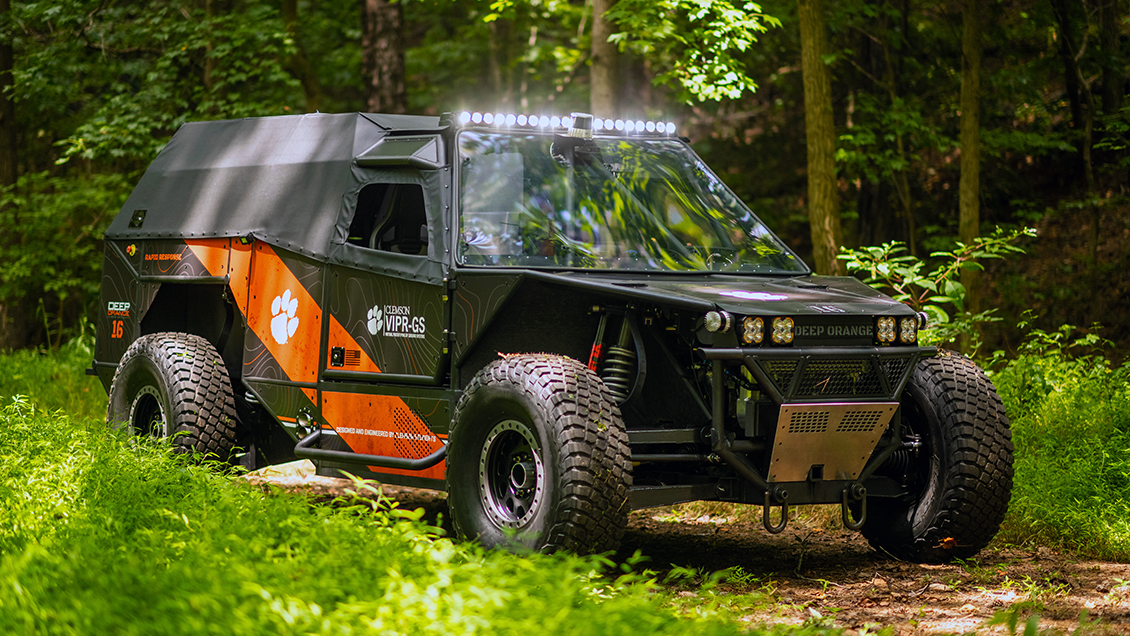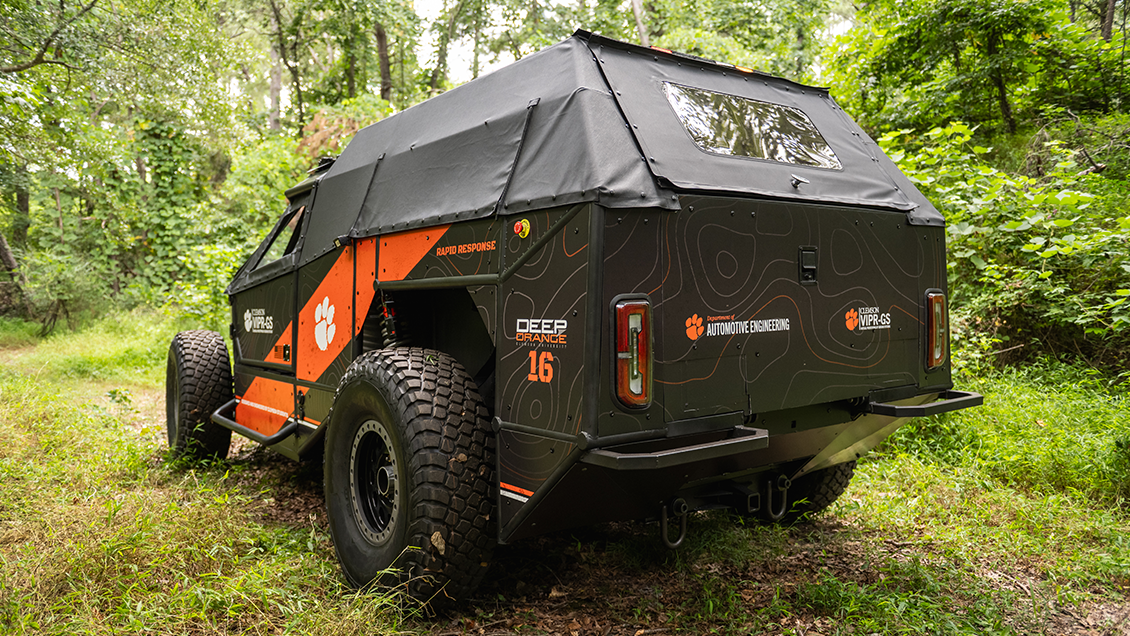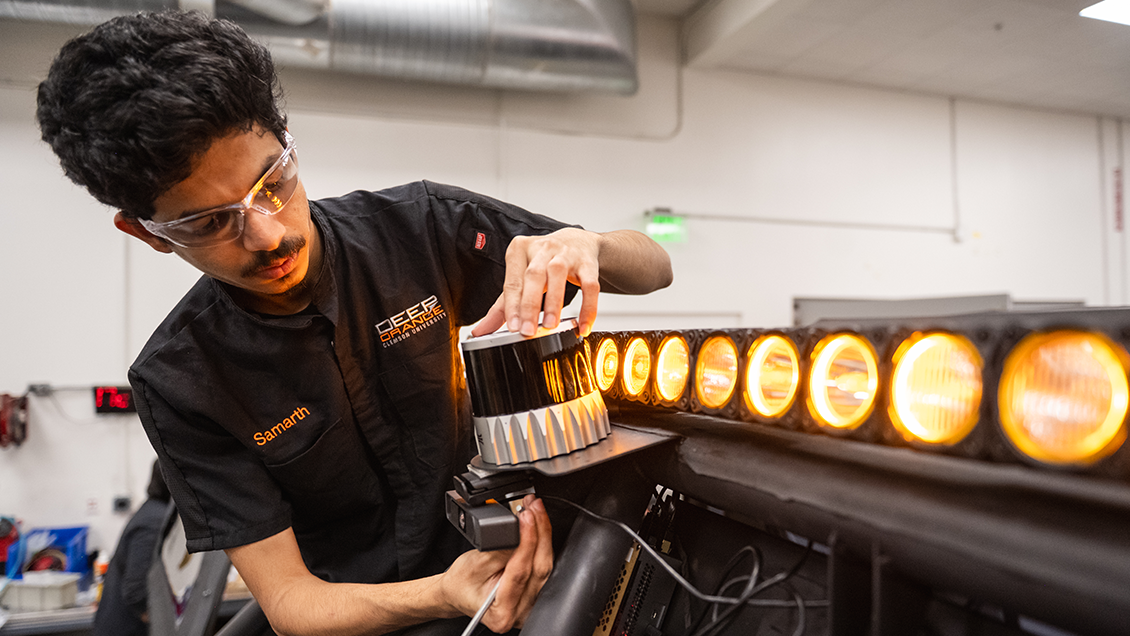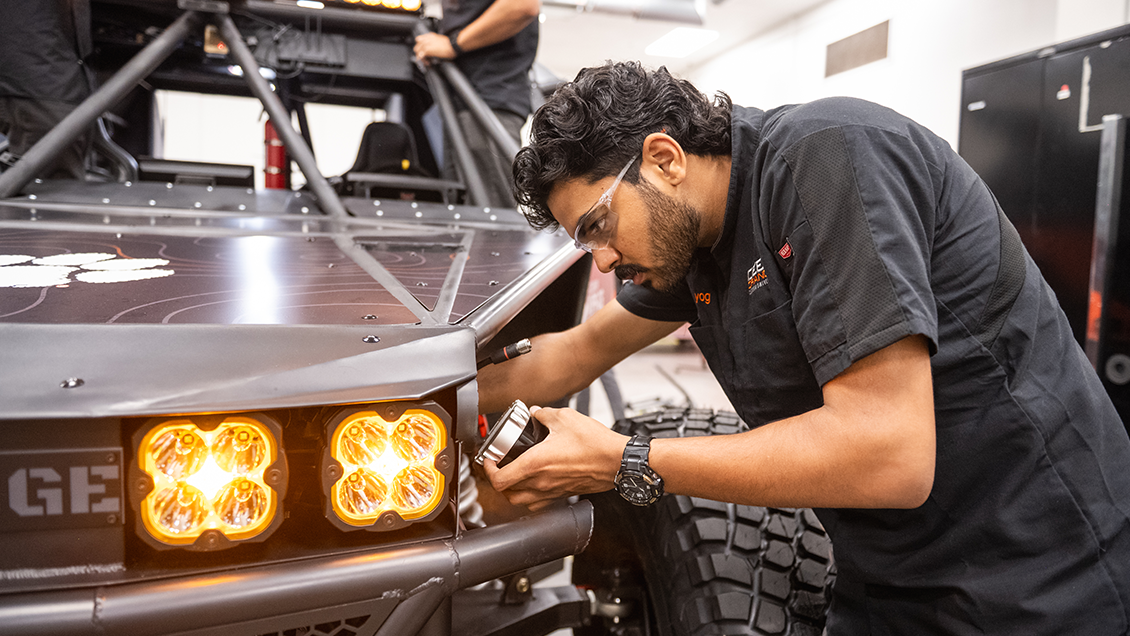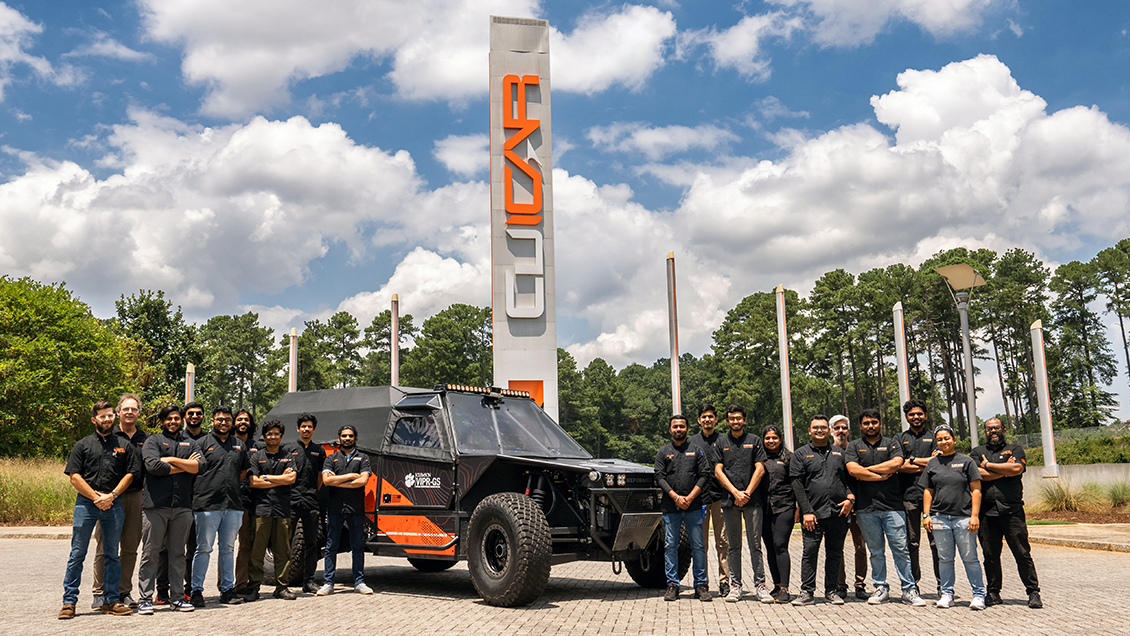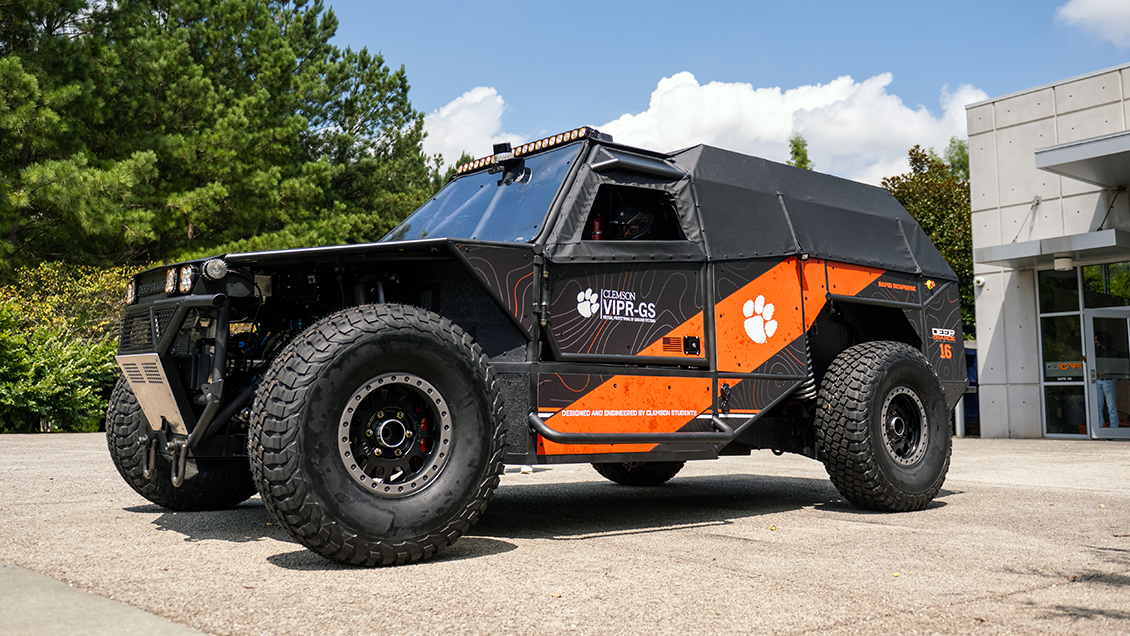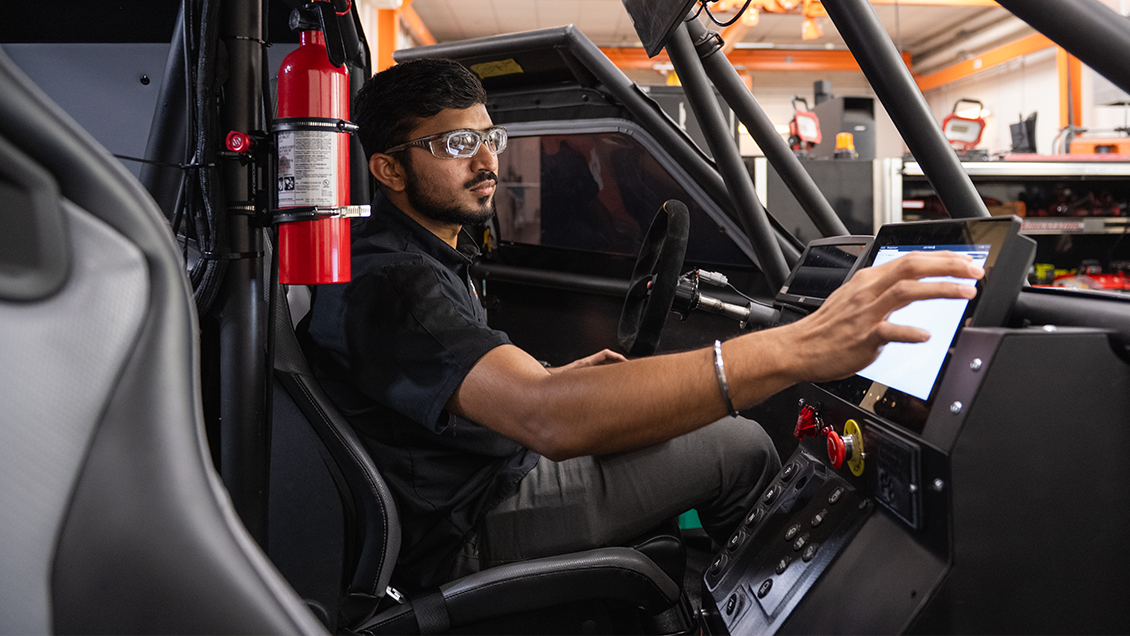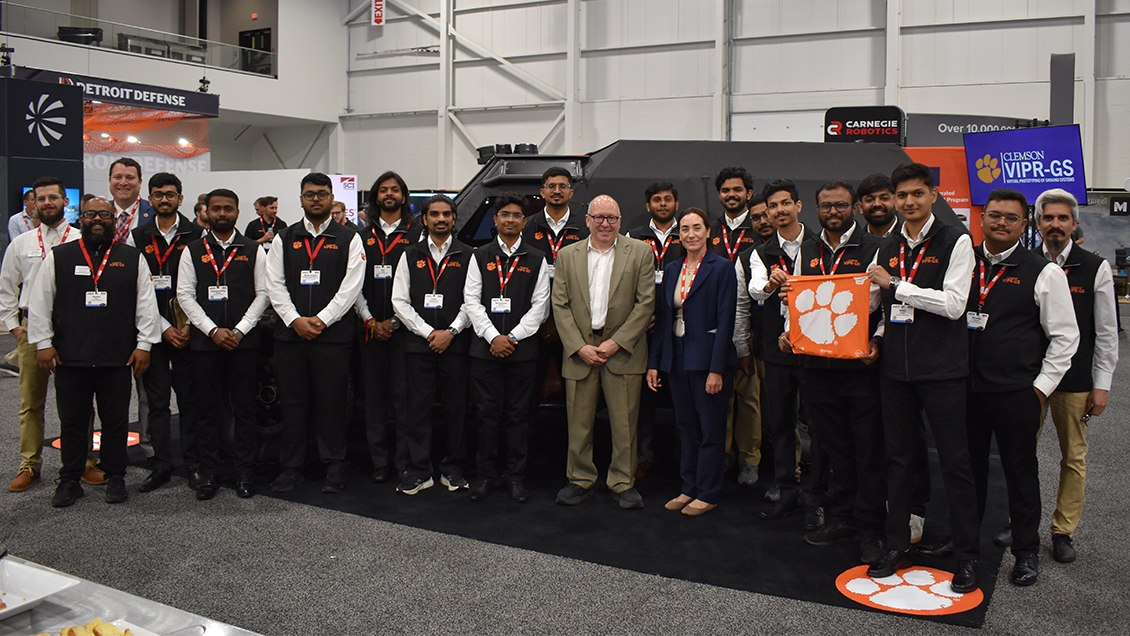Clemson University Unveils Deep Orange 16: A Semi-Autonomous, Off-Road Rapid Response Vehicle
August 12, 2025
Clemson University Unveils Deep Orange 16: A Semi-Autonomous, Off-Road Rapid Response Vehicle
August 12, 2025
Clemson University has unveiled Deep Orange 16, a next-generation, semi-autonomous vehicle designed to transform emergency response in extreme conditions. Developed by graduate automotive engineering students in the university’s acclaimed Deep Orange program, the vehicle merges advanced technology with mission-critical functionality to enhance the speed, safety, and efficiency of rescue operations.
Sponsored by the Virtual Prototyping of Autonomy-Enabled Ground Systems (VIPR-GS) Research Center and developed in collaboration with the U.S. Army and other strategic partners, Deep Orange 16 is engineered to tackle some of the toughest challenges in high-risk rescue scenarios—reducing response time while limiting the number of personnel needed in the field.
Mission-Driven Design
Inspired by the real-world challenges faced during Hurricane Helene, the Deep Orange 16 team engineered the vehicle to support critical disaster response efforts. On its outbound journey, the vehicle can deliver a full pallet of emergency supplies to affected areas. For the return trip, the vehicle operates autonomously—transporting up to six individuals, including injured passengers, to safety. Capable of reaching the scene within the “golden hour,” the vehicle also generates a high-resolution digital terrain map for the autonomous return, allowing the original driver to remain on-site and assist ongoing rescue efforts.
Engineered for the Elements
- High-speed, semi-autonomous vehicle with a 350-kilometer range and off-road capabilities built for unpredictable terrain.
- Series hybrid powertrain enables continuous battery charging to extend range and supports near-silent operation for special mission scenarios.
- Designed for real-time deployment, Deep Orange 16 features a lightweight, weatherproof exterior engineered for reliable operation in a variety of environmental conditions.
Innovative Monitoring
- A 360-degree camera system provides full situational awareness, including tire-level views for obstacle detection.
- An AI-powered heads-up display alerts drivers to hazards up to 100 feet away, enhancing navigation and safety.
- Onboard medical monitoring tracks patient vitals in real time, including temperature, heart rate, and perspiration during transport.
Rescue-Ready Interior
- Interior accommodates the transport of six people, including a rotating passenger seat to support multiple operational roles.
- Ergonomic litter loader streamlines patient or supply loading.
- MOLLE storage system offers secure, modular organization of rescue and medical gear.
- Rear hatch fits a standard pallet of supplies, while the clam-shell design enables flexible loading of oversized cargo.
- Integrated exterior compartments securely transport fire rescue equipment.
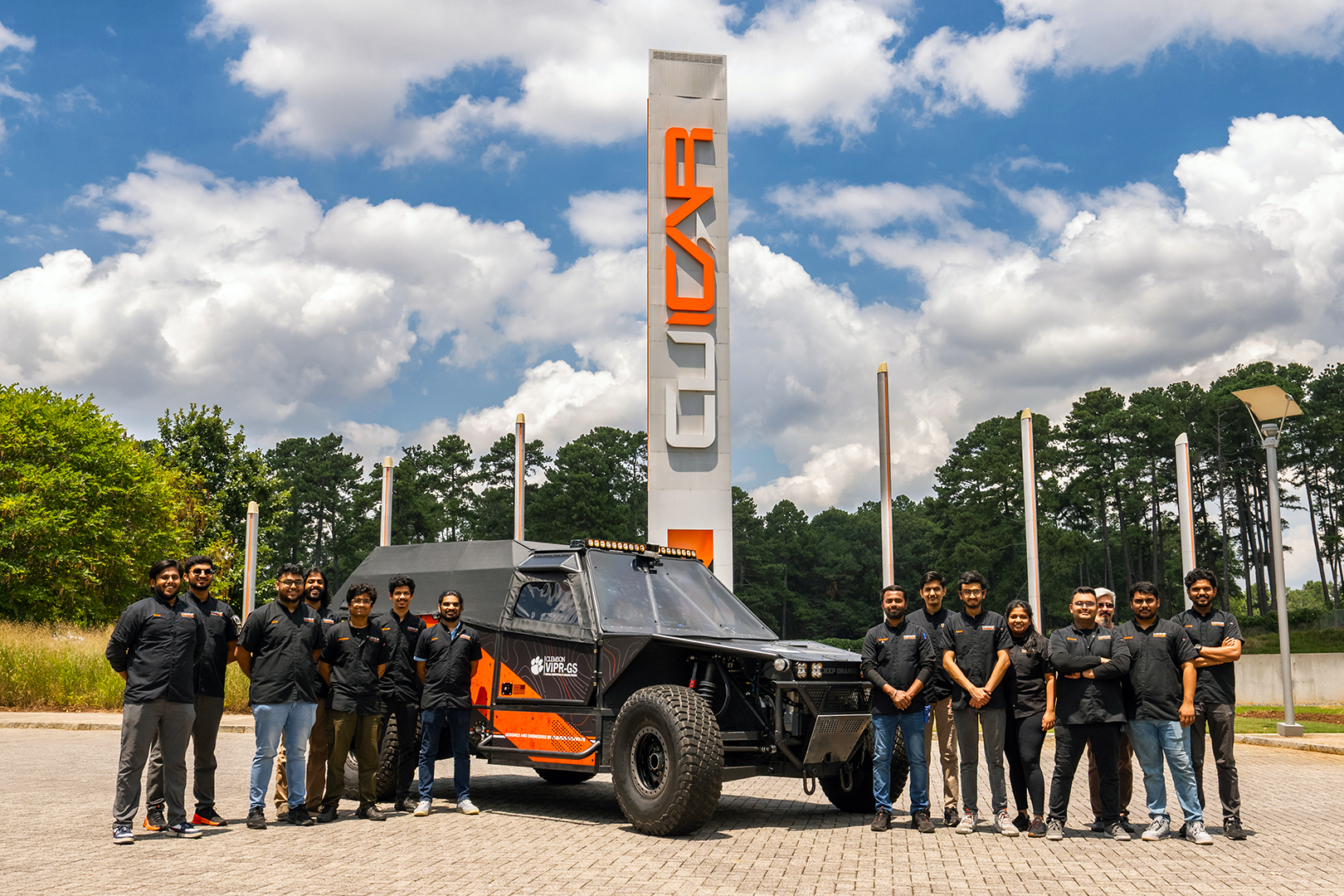
Deep Orange 16 students and staff with their prototype vehicle on the CU-ICAR campus.
Developing Industry Leaders
Deep Orange 16 showcases the innovation, technical expertise, and dedication of the 17-member team of graduate students from Clemson’s automotive engineering program. “Deep Orange pushes us to think like real-world engineers,” said team lead Rohit Godse. “We are not just learning theory, but solving complex, high-stakes problems that prepare us to lead in the industry from day one.”
From initial concept to fully functional prototype, the team collaborated with the VIPR-GS Research Center, government agencies, and industry partners to solve practical challenges—gaining hands-on experience that prepares them to enter the workforce as industry-ready engineers. “The Deep Orange program demonstrates what’s possible when academia, government, and industry come together to solve real-world problems,” said Dr. Robert Prucka, Kulwicki Endowed Professor and Chair of the Department of Automotive Engineering. “Our students are not only driving innovation—they’re helping to save lives by improving how we respond to emergencies in the most challenging environments.”
Deep Orange 16 was officially unveiled at the Ground Vehicle Systems Engineering & Technology Symposium (GVSETS) in Novi, Michigan. It will now serve as a test and validation platform for ongoing research by the VIPR-GS Research Center, located at the Clemson University International Center for Automotive Research (CU-ICAR) in Greenville, South Carolina.
Acknowledgment: This work was supported by Clemson University’s Virtual Prototyping of Autonomy Enabled Ground Systems (VIPR-GS), under Cooperative Agreement W56HZV-21-2-0001 with the US Army DEVCOM Ground Vehicle Systems Center (GVSC).
DISTRIBUTION STATEMENT A. Approved for public release; distribution is unlimited. OPSEC9980.

Clemson University has unveiled Deep Orange 16, a next-generation, semi-autonomous vehicle designed to transform emergency response in extreme conditions. Developed by graduate automotive engineering students in the university’s acclaimed Deep Orange program, the vehicle merges advanced technology with mission-critical functionality to enhance the speed, safety, and efficiency of rescue operations.
Sponsored by the Virtual Prototyping of Autonomy-Enabled Ground Systems (VIPR-GS) Research Center and developed in collaboration with the U.S. Army and other strategic partners, Deep Orange 16 is engineered to tackle some of the toughest challenges in high-risk rescue scenarios—reducing response time while limiting the number of personnel needed in the field.
Mission-Driven Design
Inspired by the real-world challenges faced during Hurricane Helene, the Deep Orange 16 team engineered the vehicle to support critical disaster response efforts. On its outbound journey, the vehicle can deliver a full pallet of emergency supplies to affected areas. For the return trip, the vehicle operates autonomously—transporting up to six individuals, including injured passengers, to safety. Capable of reaching the scene within the “golden hour,” the vehicle also generates a high-resolution digital terrain map for the autonomous return, allowing the original driver to remain on-site and assist ongoing rescue efforts.
Engineered for the Elements
- High-speed, semi-autonomous vehicle with a 350-kilometer range and off-road capabilities built for unpredictable terrain.
- Series hybrid powertrain enables continuous battery charging to extend range and supports near-silent operation for special mission scenarios.
- Designed for real-time deployment, Deep Orange 16 features a lightweight, weatherproof exterior engineered for reliable operation in a variety of environmental conditions.
Innovative Monitoring
- A 360-degree camera system provides full situational awareness, including tire-level views for obstacle detection.
- An AI-powered heads-up display alerts drivers to hazards up to 100 feet away, enhancing navigation and safety.
- Onboard medical monitoring tracks patient vitals in real time, including temperature, heart rate, and perspiration during transport.
Rescue-Ready Interior
- Interior accommodates the transport of six people, including a rotating passenger seat to support multiple operational roles.
- Ergonomic litter loader streamlines patient or supply loading.
- MOLLE storage system offers secure, modular organization of rescue and medical gear.
- Rear hatch fits a standard pallet of supplies, while the clam-shell design enables flexible loading of oversized cargo.
- Integrated exterior compartments securely transport fire rescue equipment.

Deep Orange 16 students and staff with their prototype vehicle on the CU-ICAR campus.
Developing Industry Leaders
Deep Orange 16 showcases the innovation, technical expertise, and dedication of the 17-member team of graduate students from Clemson’s automotive engineering program. “Deep Orange pushes us to think like real-world engineers,” said team lead Rohit Godse. “We are not just learning theory, but solving complex, high-stakes problems that prepare us to lead in the industry from day one.”
From initial concept to fully functional prototype, the team collaborated with the VIPR-GS Research Center, government agencies, and industry partners to solve practical challenges—gaining hands-on experience that prepares them to enter the workforce as industry-ready engineers. “The Deep Orange program demonstrates what’s possible when academia, government, and industry come together to solve real-world problems,” said Dr. Robert Prucka, Kulwicki Endowed Professor and Chair of the Department of Automotive Engineering. “Our students are not only driving innovation—they’re helping to save lives by improving how we respond to emergencies in the most challenging environments.”
Deep Orange 16 was officially unveiled at the Ground Vehicle Systems Engineering & Technology Symposium (GVSETS) in Novi, Michigan. It will now serve as a test and validation platform for ongoing research by the VIPR-GS Research Center, located at the Clemson University International Center for Automotive Research (CU-ICAR) in Greenville, South Carolina.
Acknowledgment: This work was supported by Clemson University’s Virtual Prototyping of Autonomy Enabled Ground Systems (VIPR-GS), under Cooperative Agreement W56HZV-21-2-0001 with the US Army DEVCOM Ground Vehicle Systems Center (GVSC).
DISTRIBUTION STATEMENT A. Approved for public release; distribution is unlimited. OPSEC9980.

Clemson University has unveiled Deep Orange 16, a next-generation, semi-autonomous vehicle designed to transform emergency response in extreme conditions. Developed by graduate automotive engineering students in the university’s acclaimed Deep Orange program, the vehicle merges advanced technology with mission-critical functionality to enhance the speed, safety, and efficiency of rescue operations.
Sponsored by the Virtual Prototyping of Autonomy-Enabled Ground Systems (VIPR-GS) Research Center and developed in collaboration with the U.S. Army and other strategic partners, Deep Orange 16 is engineered to tackle some of the toughest challenges in high-risk rescue scenarios—reducing response time while limiting the number of personnel needed in the field.
Mission-Driven Design
Inspired by the real-world challenges faced during Hurricane Helene, the Deep Orange 16 team engineered the vehicle to support critical disaster response efforts. On its outbound journey, the vehicle can deliver a full pallet of emergency supplies to affected areas. For the return trip, the vehicle operates autonomously—transporting up to six individuals, including injured passengers, to safety. Capable of reaching the scene within the “golden hour,” the vehicle also generates a high-resolution digital terrain map for the autonomous return, allowing the original driver to remain on-site and assist ongoing rescue efforts.
Engineered for the Elements
- High-speed, semi-autonomous vehicle with a 350-kilometer range and off-road capabilities built for unpredictable terrain.
- Series hybrid powertrain enables continuous battery charging to extend range and supports near-silent operation for special mission scenarios.
- Designed for real-time deployment, Deep Orange 16 features a lightweight, weatherproof exterior engineered for reliable operation in a variety of environmental conditions.
Innovative Monitoring
- A 360-degree camera system provides full situational awareness, including tire-level views for obstacle detection.
- An AI-powered heads-up display alerts drivers to hazards up to 100 feet away, enhancing navigation and safety.
- Onboard medical monitoring tracks patient vitals in real time, including temperature, heart rate, and perspiration during transport.
Rescue-Ready Interior
- Interior accommodates the transport of six people, including a rotating passenger seat to support multiple operational roles.
- Ergonomic litter loader streamlines patient or supply loading.
- MOLLE storage system offers secure, modular organization of rescue and medical gear.
- Rear hatch fits a standard pallet of supplies, while the clam-shell design enables flexible loading of oversized cargo.
- Integrated exterior compartments securely transport fire rescue equipment.

Deep Orange 16 students and staff with their prototype vehicle on the CU-ICAR campus.
Developing Industry Leaders
Deep Orange 16 showcases the innovation, technical expertise, and dedication of the 17-member team of graduate students from Clemson’s automotive engineering program. “Deep Orange pushes us to think like real-world engineers,” said team lead Rohit Godse. “We are not just learning theory, but solving complex, high-stakes problems that prepare us to lead in the industry from day one.”
From initial concept to fully functional prototype, the team collaborated with the VIPR-GS Research Center, government agencies, and industry partners to solve practical challenges—gaining hands-on experience that prepares them to enter the workforce as industry-ready engineers. “The Deep Orange program demonstrates what’s possible when academia, government, and industry come together to solve real-world problems,” said Dr. Robert Prucka, Kulwicki Endowed Professor and Chair of the Department of Automotive Engineering. “Our students are not only driving innovation—they’re helping to save lives by improving how we respond to emergencies in the most challenging environments.”
Deep Orange 16 was officially unveiled at the Ground Vehicle Systems Engineering & Technology Symposium (GVSETS) in Novi, Michigan. It will now serve as a test and validation platform for ongoing research by the VIPR-GS Research Center, located at the Clemson University International Center for Automotive Research (CU-ICAR) in Greenville, South Carolina.
Acknowledgment: This work was supported by Clemson University’s Virtual Prototyping of Autonomy Enabled Ground Systems (VIPR-GS), under Cooperative Agreement W56HZV-21-2-0001 with the US Army DEVCOM Ground Vehicle Systems Center (GVSC).
DISTRIBUTION STATEMENT A. Approved for public release; distribution is unlimited. OPSEC9980.



